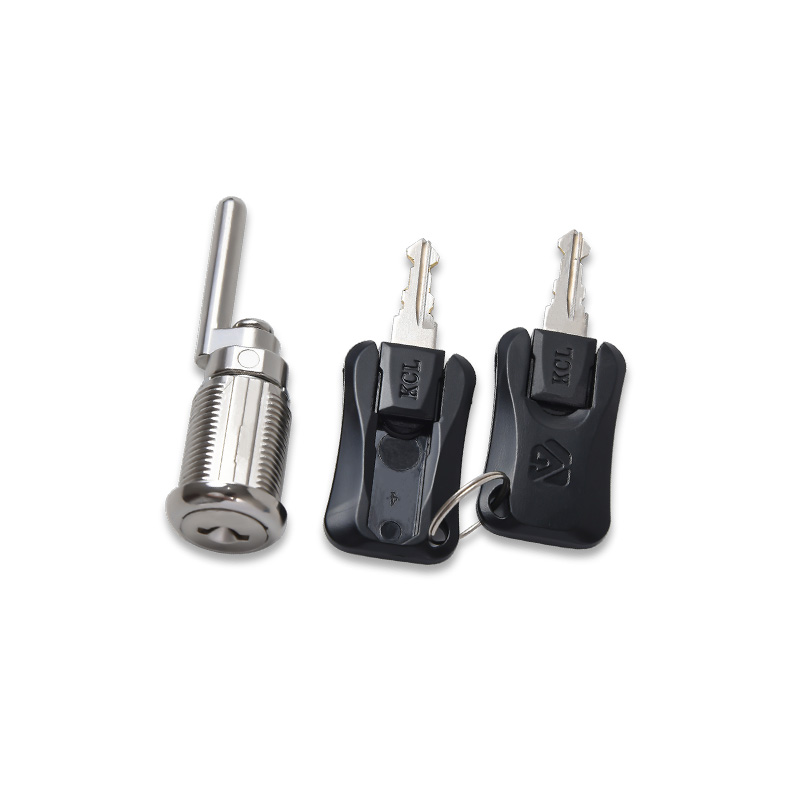The durability of interchangeable core locks often depends on the quality of the components and the level of maintenance they receive. Here are considerations regarding durability and recommended maintenance practices:
Material Quality: The longevity and robustness of interchangeable core locks hinge on the meticulous selection of materials during their manufacturing. Opting for locks crafted from solid brass or hardened steel not only ensures enduring physical integrity but also demonstrates a commitment to security and reliability. A discerning user should actively seek products from manufacturers renowned for their dedication to industry-leading material quality standards. The insistence on high-grade materials is an investment in the lock's sustained performance and resistance to wear and tear.
Corrosion Resistance: In environments prone to corrosion, such as coastal or outdoor settings, the lock's resistance to corrosive elements becomes paramount. Manufacturers can enhance this resistance through the application of advanced coatings or the use of corrosion-resistant materials. Rigorous inspection routines must be established, with a keen eye on vulnerable areas. Periodic assessments should prompt the application of specialized protective coatings, ensuring that the lock remains impervious to the detrimental effects of corrosion over time.
Keyway Protection: Keyway protection mechanisms, such as dedicated covers or caps, serve as the first line of defense against infiltrating dust, debris, and contaminants. These safeguards prevent foreign particles from compromising the intricate internal components of the lock. Regular maintenance mandates not only the periodic cleaning of the keyway but also meticulous checks to confirm the integrity of protective covers. This proactive approach preserves the lock's operational precision, even in challenging environmental conditions.
Lubrication: The judicious application of lubricants tailored to the lock's specifications is pivotal in maintaining optimal functionality. Lubrication intervals, as recommended by the manufacturer, should be strictly adhered to, striking a balance between preventing friction-related wear and steering clear of excessive accumulation of debris. Applying the lubricant with precision to all moving parts, including the core and pins, is imperative. This meticulous approach ensures that the lock's operation remains smooth while mitigating the risk of attracting particles that could compromise its internal mechanism.
Key Maintenance: Educating users on the nuanced art of key handling is essential for preserving the lock's longevity. Emphasizing the prohibition of forcibly inserting keys guards against potential damage to internal components. A proactive approach to key maintenance involves the prompt replacement of worn or damaged keys. This swift response not only safeguards the lock from undue stress but also guarantees the user a consistently reliable and secure means of access.
Regular Inspections: Implementing a rigorous and systematic inspection schedule is the cornerstone of proactive maintenance. Visual assessments should extend to both the lock and its corresponding keys, with a focus on detecting early signs of wear, misalignment, or any anomalies that could compromise performance. The documentation of inspection findings should be coupled with a responsive approach to rectifying identified issues promptly. This methodical inspection regimen serves as a preemptive strike against potential malfunctions, ensuring that the lock consistently meets performance expectations.
Rekeying Schedule: The establishment of a judicious rekeying schedule is a proactive security measure that addresses both usage patterns and evolving security needs. Regular rekeying, following industry standards and manufacturer guidelines, is paramount in preventing unauthorized access through compromised keys. Administering the rekeying process with precision by qualified personnel ensures not only the continued security of the lock but also its ongoing structural integrity. The user benefits from a lock system that adapts to changing security dynamics without compromising operational efficiency.
B811A LEVEL3 MANAGEMENT LOCK

B811A LEVEL3 MANAGEMENT LOCK



 English
English 中文简体
中文简体
















